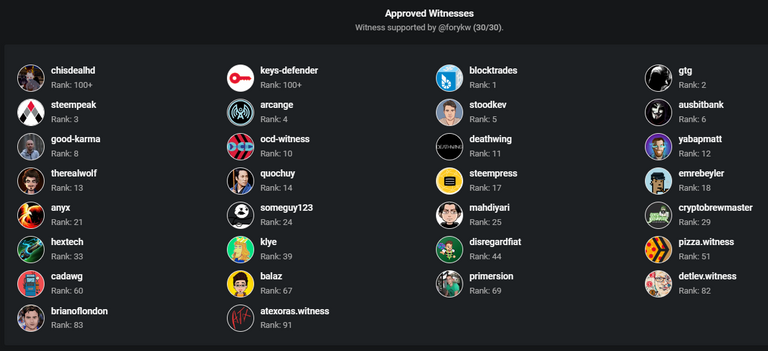Considering that I don't run a project or anything, my guess is that I would place very low.
The placing is irrelevant to that, to be honest. People need to know what you are doing, be capable of offering to the community and be able to protect. There is a multitude of reasons, to be honest. But the easiest one might be, you aren't doing anything wrong and running a node for a very long time (which by definition you would be helping the network in the long term...). But this is by no means the "best standard" (probably not even 1% close... but serves as a simple basic explanation).
How much Hive is needed to run a node, and can it be powered up while going towards the node?
To run a node all you need is memory, CPU, internet and disk to hold the blockchain (preferably SSD or better). No need for staking because of the way HIVE works. This means that the only "power up" you can do is use your own account and then vote for yourself.
Example of the witnesses I am voting for at the moment:

The HIVE power of each voter will contribute to that voted witness to raise on the list, and then the higher the witness is, the closer it gets to the top20, etc...
You are currently proxying through someone else, which means that someone will decide the votes, not you. All the powered-up HIVE you have is being used to vote on the proxy you have chosen. There is nothing wrong with that if you control that proxy... for example. Otherwise, you need to be sure you trust the voting of that other account. This can be changed at any time.
To set up a witness node just for verifying blocks does not require you to open it to the public. Similar to not specifying the "seed" option on most of the "master nodes" wallets (if you are familiar). The node will just connect to other peers and not allow/expect to receive connections from other nodes in order to exchange blocks/transactions.

